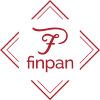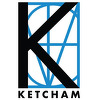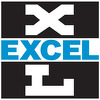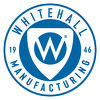
National Kitchen & Bath Association
The National Kitchen + Bath Association (NKBA) is a non-profit trade group that promotes professionalism in the kitchen and bath industry.
Click to Learn More About the National Kitchen & Bath Association
Visit www.nkba.org and Join Now!
Displaying 1 - 25 of 112 results.
FIRST [1-25] [26-50] [51-75] [76-100] [101-112] NEXT LAST SHOW ALLScan this code with your mobile device camera to take this page on-the-go!

https://redirect.aecdaily.com/s679669/www.aecdaily.com/course/784584

 The recent shift towards protecting the environment has also brought about a better understanding of our innate need to reconnect with our natural surroundings. This is known as biophilia. In this course, we will examine the elements of biophilic design and how to implement biophilic design strategies, known to improve physical and mental well-being of occupants. The use of resilient flooring in commercial applications offers an opportunity to implement biophilic design.
The recent shift towards protecting the environment has also brought about a better understanding of our innate need to reconnect with our natural surroundings. This is known as biophilia. In this course, we will examine the elements of biophilic design and how to implement biophilic design strategies, known to improve physical and mental well-being of occupants. The use of resilient flooring in commercial applications offers an opportunity to implement biophilic design.
Scan this code with your mobile device camera to take this page on-the-go!

https://redirect.aecdaily.com/s8547/www.aecdaily.com/course/963191

 From home offices to gyms to entertaining, homes have become multifunctional spaces. The use of smart technology provides innovative options for people to control and manage their homes for comfort and well-being on a daily basis. Smart home technology allows people to customize their homes. This course discusses how smart technology can interconnect household spaces to increase comfort, cleanliness, and well-being.
From home offices to gyms to entertaining, homes have become multifunctional spaces. The use of smart technology provides innovative options for people to control and manage their homes for comfort and well-being on a daily basis. Smart home technology allows people to customize their homes. This course discusses how smart technology can interconnect household spaces to increase comfort, cleanliness, and well-being.
Scan this code with your mobile device camera to take this page on-the-go!

https://redirect.aecdaily.com/s13907/www.aecdaily.com/course/905632

 Bathrooms can be dangerous places for people with and without physical limitations. The prevalence of bathroom falls amongst persons of all age groups and levels of ability has driven the trend of accessible shower design. Presented here is an overview of how curbless shower pans are designed for durability and safety, and to meet the needs of accessible design. Included are discussions on traditional and modern shower pan design and installation methods and their associated drawbacks and benefits. Industry resources and standards are outlined.
Bathrooms can be dangerous places for people with and without physical limitations. The prevalence of bathroom falls amongst persons of all age groups and levels of ability has driven the trend of accessible shower design. Presented here is an overview of how curbless shower pans are designed for durability and safety, and to meet the needs of accessible design. Included are discussions on traditional and modern shower pan design and installation methods and their associated drawbacks and benefits. Industry resources and standards are outlined.
Scan this code with your mobile device camera to take this page on-the-go!

https://redirect.aecdaily.com/s8761/www.aecdaily.com/course/792196

 This course focuses on barrier free shower design and installation. Following a brief review of the reasons, benefits, and legal requirements for barrier free showers it summarizes the features and attributes of shower assemblies, relevant industry standards, waterproofing membranes and drains, best practices, installation methodology, installation tips and techniques, and walk/roll in showers. It includes a review of the design considerations and advice for the creation of perfectly performing showers which follow the latest design trends.
This course focuses on barrier free shower design and installation. Following a brief review of the reasons, benefits, and legal requirements for barrier free showers it summarizes the features and attributes of shower assemblies, relevant industry standards, waterproofing membranes and drains, best practices, installation methodology, installation tips and techniques, and walk/roll in showers. It includes a review of the design considerations and advice for the creation of perfectly performing showers which follow the latest design trends.
Scan this code with your mobile device camera to take this page on-the-go!

https://redirect.aecdaily.com/s1052525/www.aecdaily.com/course/1087814

 Natural and artificial lighting surrounds us at all times. Light helps us to work safely, enhances design, creates atmosphere, and influences our well-being. This course discusses the circadian rhythm, occupant health, and lighting color temperature, and it examines LED lighting requirements and options for lighting-integrated bathroom mirrors and cabinets.
Natural and artificial lighting surrounds us at all times. Light helps us to work safely, enhances design, creates atmosphere, and influences our well-being. This course discusses the circadian rhythm, occupant health, and lighting color temperature, and it examines LED lighting requirements and options for lighting-integrated bathroom mirrors and cabinets.
Scan this code with your mobile device camera to take this page on-the-go!

https://redirect.aecdaily.com/s525798/www.aecdaily.com/course/1017988

 Power and charging requirements for hospitality facilities are changing radically and rapidly. This course examines the options for and benefits of supplying power and charging outlets in walls, furniture, headboards, nightstands, public seating, and public gathering spaces, including outdoor areas, as well as the applicable codes for furniture-based power outlets. The course concludes with an overview of the benefits of occupancy sensors and auto-off switches in guest rooms and the installation requirements to comply with energy and electrical codes.
Power and charging requirements for hospitality facilities are changing radically and rapidly. This course examines the options for and benefits of supplying power and charging outlets in walls, furniture, headboards, nightstands, public seating, and public gathering spaces, including outdoor areas, as well as the applicable codes for furniture-based power outlets. The course concludes with an overview of the benefits of occupancy sensors and auto-off switches in guest rooms and the installation requirements to comply with energy and electrical codes.
Scan this code with your mobile device camera to take this page on-the-go!

https://redirect.aecdaily.com/s7816/www.aecdaily.com/course/991693

 As impervious land cover increases, so does the need for stormwater management. Concrete grid pavements provide increased infiltration rates, positively affecting runoff flow while decreasing erosion. This course introduces the range of grid pavement and erosion control applications and provides design and construction guidelines. Environmental performance is defined via conclusions from several research projects. Concrete grid pavements require minimal maintenance when properly designed and installed in appropriate applications. This course also includes an overview of how concrete grid paving units can be used to meet a number of LEED® v4.1 BD+C credit requirements.
As impervious land cover increases, so does the need for stormwater management. Concrete grid pavements provide increased infiltration rates, positively affecting runoff flow while decreasing erosion. This course introduces the range of grid pavement and erosion control applications and provides design and construction guidelines. Environmental performance is defined via conclusions from several research projects. Concrete grid pavements require minimal maintenance when properly designed and installed in appropriate applications. This course also includes an overview of how concrete grid paving units can be used to meet a number of LEED® v4.1 BD+C credit requirements.
Scan this code with your mobile device camera to take this page on-the-go!

https://redirect.aecdaily.com/s1051417/www.aecdaily.com/course/1061717

 Now more than ever, the environmental impacts of products used in construction are a worldwide concern and one that the architecture and design (A&D) community is being asked to address in their work. Environmental product declarations (EPDs) are powerful tools when choosing materials for commercial projects. This course discusses how, where, and why to use EPDs to inform sustainable product selection and specification decisions and how EPDs are incorporated into key green building rating systems and codes, including LEED® v4.1 Building Design and Construction (BD+C) and Interior Design and Construction (ID+C), Green Globes® for New Construction (NC), and the International Green Construction Code® (IgCC®).
Now more than ever, the environmental impacts of products used in construction are a worldwide concern and one that the architecture and design (A&D) community is being asked to address in their work. Environmental product declarations (EPDs) are powerful tools when choosing materials for commercial projects. This course discusses how, where, and why to use EPDs to inform sustainable product selection and specification decisions and how EPDs are incorporated into key green building rating systems and codes, including LEED® v4.1 Building Design and Construction (BD+C) and Interior Design and Construction (ID+C), Green Globes® for New Construction (NC), and the International Green Construction Code® (IgCC®).
Scan this code with your mobile device camera to take this page on-the-go!

https://redirect.aecdaily.com/s2580/www.aecdaily.com/course/1058864

 Selecting flooring is an important decision, but equal emphasis should be placed on proper surface preparation to avoid costly flooring failures. This course reviews best practices for a typical hardwood flooring installation and discusses the innovative options that consolidate products and steps, saving time and money while enhancing certain performance characteristics.
Selecting flooring is an important decision, but equal emphasis should be placed on proper surface preparation to avoid costly flooring failures. This course reviews best practices for a typical hardwood flooring installation and discusses the innovative options that consolidate products and steps, saving time and money while enhancing certain performance characteristics.
Scan this code with your mobile device camera to take this page on-the-go!

https://redirect.aecdaily.com/s1078641/www.aecdaily.com/course/1088872

 This course introduces the learner to the benefits and design advantages of porcelain surface material for both indoor and outdoor use in residential and commercial projects. Since it is a relatively new material in the US, we will review its components and manufacture and how they result in a product with exceptional characteristics for human health and durability. We'll also show and discuss indoor and outdoor applications, the variations available for vertical and horizontal applications, and the many design options. Finally, we’ll help the learner understand what is needed to design with this material and how to work with a fabricator.
This course introduces the learner to the benefits and design advantages of porcelain surface material for both indoor and outdoor use in residential and commercial projects. Since it is a relatively new material in the US, we will review its components and manufacture and how they result in a product with exceptional characteristics for human health and durability. We'll also show and discuss indoor and outdoor applications, the variations available for vertical and horizontal applications, and the many design options. Finally, we’ll help the learner understand what is needed to design with this material and how to work with a fabricator.
Scan this code with your mobile device camera to take this page on-the-go!

https://redirect.aecdaily.com/s5712/www.aecdaily.com/course/870239

 Professional sports stadiums form large complexes with enormous impacts on the environment and local communities. Owners, architects, and operations managers can use this influence to generate a net positive effect on people, the natural environment, and the bottom line. In this video, the executives and consultants involved in the design and daily operation of Gillette Stadium and Mercedes-Benz Stadium discuss the challenges and opportunities of sustainable stadium design. Topics discussed include district energy generation, gray water treatment, evaluation and implementation of new technologies, partnering with local utilities, cost recovery, profitability, and community health.
Professional sports stadiums form large complexes with enormous impacts on the environment and local communities. Owners, architects, and operations managers can use this influence to generate a net positive effect on people, the natural environment, and the bottom line. In this video, the executives and consultants involved in the design and daily operation of Gillette Stadium and Mercedes-Benz Stadium discuss the challenges and opportunities of sustainable stadium design. Topics discussed include district energy generation, gray water treatment, evaluation and implementation of new technologies, partnering with local utilities, cost recovery, profitability, and community health.
Scan this code with your mobile device camera to take this page on-the-go!

https://redirect.aecdaily.com/s8761/www.aecdaily.com/course/1009286

 New technology and improvements in masonry veneer installation can help your team save time and money in the construction process while providing superior results. In this course, you'll learn how cutting-edge technology is helping masons move beyond traditional lath and scratch and be introduced to the principles behind enhanced masonry veneer installation systems (EMVIS). Learn how to create permanent, high-strength installations for residential, commercial, and industrial applications using EMVIS with fortified mortars and innovative waterproofing barrier membranes that protect against air and water penetration.
New technology and improvements in masonry veneer installation can help your team save time and money in the construction process while providing superior results. In this course, you'll learn how cutting-edge technology is helping masons move beyond traditional lath and scratch and be introduced to the principles behind enhanced masonry veneer installation systems (EMVIS). Learn how to create permanent, high-strength installations for residential, commercial, and industrial applications using EMVIS with fortified mortars and innovative waterproofing barrier membranes that protect against air and water penetration.
Scan this code with your mobile device camera to take this page on-the-go!

https://redirect.aecdaily.com/s610566/www.aecdaily.com/course/626812

 This presentation provides an overview of sustainable materials for the bath, including production, performance, maintenance, and frameworks for assessment, and focuses on recycled copper, sustainably made concrete, FSC®-certified bamboo, and reclaimed wood.
This presentation provides an overview of sustainable materials for the bath, including production, performance, maintenance, and frameworks for assessment, and focuses on recycled copper, sustainably made concrete, FSC®-certified bamboo, and reclaimed wood.
Scan this code with your mobile device camera to take this page on-the-go!

https://redirect.aecdaily.com/s6403/www.aecdaily.com/course/1080220

 Water is one of our most valuable resources, yet many states suffer water shortages due to preventable problems such as overuse and leakages. This course discusses the increased need for water conservation and examines the requirements in CALGreen and the LEED® v4.1, Green Globes®, and BREEAM In-Use green building rating systems. The EPA’s WaterSense® initiative is also discussed, along with case studies explaining the benefits of concealed toilet systems and their contribution to water conservation.
This course is one of two identical courses titled Water Conservation: Initiatives and Standards . You will receive credit for taking only one of these courses.
Water is one of our most valuable resources, yet many states suffer water shortages due to preventable problems such as overuse and leakages. This course discusses the increased need for water conservation and examines the requirements in CALGreen and the LEED® v4.1, Green Globes®, and BREEAM In-Use green building rating systems. The EPA’s WaterSense® initiative is also discussed, along with case studies explaining the benefits of concealed toilet systems and their contribution to water conservation.
This course is one of two identical courses titled Water Conservation: Initiatives and Standards . You will receive credit for taking only one of these courses.
Scan this code with your mobile device camera to take this page on-the-go!

https://redirect.aecdaily.com/s390008/www.aecdaily.com/course/917446

 There is an extremely wide array of coated or composite fabrics available on the market, each type formulated for specific uses and with different levels of performance and quality. To assist in the decision-making process, standards have been developed to show product performance, facilitate quality control, and assure designers that the product they are specifying is suitable for normal commercial use. This course briefly outlines the history, properties, and uses of coated fabrics, the intent and content of one coated fabric standard, and the testing protocols that support it.
There is an extremely wide array of coated or composite fabrics available on the market, each type formulated for specific uses and with different levels of performance and quality. To assist in the decision-making process, standards have been developed to show product performance, facilitate quality control, and assure designers that the product they are specifying is suitable for normal commercial use. This course briefly outlines the history, properties, and uses of coated fabrics, the intent and content of one coated fabric standard, and the testing protocols that support it.
Scan this code with your mobile device camera to take this page on-the-go!

https://redirect.aecdaily.com/s485236/www.aecdaily.com/course/656814

 “Sustainable” design isn’t just “environmental.” It’s design that works for and contributes to the health and welfare of all individuals as well as the planet, now and in the future. This course looks at hand dryers as part of sustainably designed restrooms and discusses how air knife hand dryers benefit the environment through energy efficiency, resource conservation, and waste reduction, and benefit all members of society by meeting ADA requirements and Universal Design principles.
“Sustainable” design isn’t just “environmental.” It’s design that works for and contributes to the health and welfare of all individuals as well as the planet, now and in the future. This course looks at hand dryers as part of sustainably designed restrooms and discusses how air knife hand dryers benefit the environment through energy efficiency, resource conservation, and waste reduction, and benefit all members of society by meeting ADA requirements and Universal Design principles.
Scan this code with your mobile device camera to take this page on-the-go!

https://redirect.aecdaily.com/s19863/www.aecdaily.com/course/1077571

 Firestopping is the process of sealing openings around penetrants or in joints or gaps between fire-rated assemblies to restore hourly fire resistance ratings. It is a critical part of fire containment and a balanced fire and life safety plan. This course outlines resources and code requirements that architects and designers should be aware of while preparing specifications for firestop systems in their projects. The course also reviews common mistakes to avoid.
Firestopping is the process of sealing openings around penetrants or in joints or gaps between fire-rated assemblies to restore hourly fire resistance ratings. It is a critical part of fire containment and a balanced fire and life safety plan. This course outlines resources and code requirements that architects and designers should be aware of while preparing specifications for firestop systems in their projects. The course also reviews common mistakes to avoid.
Scan this code with your mobile device camera to take this page on-the-go!

https://redirect.aecdaily.com/s1072115/www.aecdaily.com/course/1102478

 Daylighting has traditionally been considered a functional way to bring natural light into building design. This course explores innovative applications of daylighting using various methods to deliver natural light into spaces and create visually appealing natural lighting as part of an overall design. It also examines daylighting strategies, considerations, and material options for successful project planning. By incorporating daylighting into projects, architects can create innovative environments that meet the sustainability goals of the building and the health, safety, and welfare needs of its occupants. Applicable credits and features in the LEED® v4.1 Building Design and Construction rating system and the WELL Building Standard™ version 2 are noted.
Daylighting has traditionally been considered a functional way to bring natural light into building design. This course explores innovative applications of daylighting using various methods to deliver natural light into spaces and create visually appealing natural lighting as part of an overall design. It also examines daylighting strategies, considerations, and material options for successful project planning. By incorporating daylighting into projects, architects can create innovative environments that meet the sustainability goals of the building and the health, safety, and welfare needs of its occupants. Applicable credits and features in the LEED® v4.1 Building Design and Construction rating system and the WELL Building Standard™ version 2 are noted.
Scan this code with your mobile device camera to take this page on-the-go!

https://redirect.aecdaily.com/s8284/www.aecdaily.com/course/960286

 The diffuse light-transmitting and composite technology of translucent structural sandwich panels has increasingly caught the imagination of architects and designers because it is possible to maximize wall or roof daylighting while minimizing energy loss, with consequent savings in the running costs of heating, air conditioning, and artificial lighting. This course explores the fundamental connection between light and health by examining how translucent structural sandwich panels deliver glare-free, diffuse daylight deeper and more evenly into spaces with maximum thermal efficiency.
The diffuse light-transmitting and composite technology of translucent structural sandwich panels has increasingly caught the imagination of architects and designers because it is possible to maximize wall or roof daylighting while minimizing energy loss, with consequent savings in the running costs of heating, air conditioning, and artificial lighting. This course explores the fundamental connection between light and health by examining how translucent structural sandwich panels deliver glare-free, diffuse daylight deeper and more evenly into spaces with maximum thermal efficiency.
Scan this code with your mobile device camera to take this page on-the-go!

https://redirect.aecdaily.com/s795432/www.aecdaily.com/course/1012262

 The design of behavioral healthcare facilities should address the therapeutic and safety needs of patients and staff while meeting the applicable codes and regulations. Reviewed in this course are ligature-resistant products developed for patient rooms and bathrooms that strike the balance between providing the safest design solutions and creating a noninstitutional environment.
The design of behavioral healthcare facilities should address the therapeutic and safety needs of patients and staff while meeting the applicable codes and regulations. Reviewed in this course are ligature-resistant products developed for patient rooms and bathrooms that strike the balance between providing the safest design solutions and creating a noninstitutional environment.
Scan this code with your mobile device camera to take this page on-the-go!

https://redirect.aecdaily.com/s627723/www.aecdaily.com/course/890449

 Adding small pockets of luxury to a home has become commonplace in spaces like the kitchen and bathroom. Personal saunas are a natural extension to this way of thinking, supporting an owner’s health and relaxation. This course looks at the wide variety of heat bathing options: sauna, infrared, and steam, with a focus on how to both select a product and implement heat bathing in residential and commercial projects.
Adding small pockets of luxury to a home has become commonplace in spaces like the kitchen and bathroom. Personal saunas are a natural extension to this way of thinking, supporting an owner’s health and relaxation. This course looks at the wide variety of heat bathing options: sauna, infrared, and steam, with a focus on how to both select a product and implement heat bathing in residential and commercial projects.
Scan this code with your mobile device camera to take this page on-the-go!

https://redirect.aecdaily.com/s6403/www.aecdaily.com/course/934626

 Dual-flush wall-mounted toilets help create modern, stylish bathrooms that strike a balance between sustainable water efficiency, flexible design, and space savings. This course compares this style with other traditional types of toilets, discusses how wall-mounted toilets benefit commercial and residential users, and explains how they satisfy the Americans with Disabilities Act (ADA) and other accessibility and building code requirements.
Dual-flush wall-mounted toilets help create modern, stylish bathrooms that strike a balance between sustainable water efficiency, flexible design, and space savings. This course compares this style with other traditional types of toilets, discusses how wall-mounted toilets benefit commercial and residential users, and explains how they satisfy the Americans with Disabilities Act (ADA) and other accessibility and building code requirements.
Scan this code with your mobile device camera to take this page on-the-go!

https://redirect.aecdaily.com/s13218/www.aecdaily.com/course/839272

 Concrete is often the substrate for both new and existing floors. Transforming the surface into a finished floor is far more sustainable than consuming additional flooring materials, adhesives, and transportation-related energy to install a floor covering. This course discusses the stages and options of the concrete polishing process, recognizes benefits of recent advances in concrete densification chemistry, and provides an overview of the limitations and possibilities for concrete floor finishes.
Concrete is often the substrate for both new and existing floors. Transforming the surface into a finished floor is far more sustainable than consuming additional flooring materials, adhesives, and transportation-related energy to install a floor covering. This course discusses the stages and options of the concrete polishing process, recognizes benefits of recent advances in concrete densification chemistry, and provides an overview of the limitations and possibilities for concrete floor finishes.
Scan this code with your mobile device camera to take this page on-the-go!

https://redirect.aecdaily.com/s12219/www.aecdaily.com/course/1062036

 Modular systems are designed around individual components that can be joined together to configure a seamless and personalized space solution. This course discusses the key design principles and benefits of modular design along with strategies for successfully incorporating modularity into a bathroom design.
Modular systems are designed around individual components that can be joined together to configure a seamless and personalized space solution. This course discusses the key design principles and benefits of modular design along with strategies for successfully incorporating modularity into a bathroom design.
Scan this code with your mobile device camera to take this page on-the-go!

https://redirect.aecdaily.com/s3515/www.aecdaily.com/course/960918

 Recent events have emphasized the importance of proper hygiene, especially in public restrooms. Presented here is a discussion on which public restroom surfaces commonly promote the spread of germs and how touchless sink faucets can be used to reduce the proliferation of harmful bacteria. Design professionals will learn about water treatment and filtration options and water system management strategies, and how to apply preventative measures to create hygienic public restrooms that support public safety.
Recent events have emphasized the importance of proper hygiene, especially in public restrooms. Presented here is a discussion on which public restroom surfaces commonly promote the spread of germs and how touchless sink faucets can be used to reduce the proliferation of harmful bacteria. Design professionals will learn about water treatment and filtration options and water system management strategies, and how to apply preventative measures to create hygienic public restrooms that support public safety.